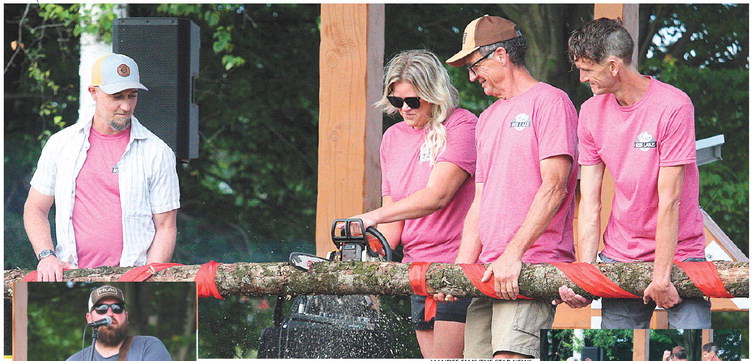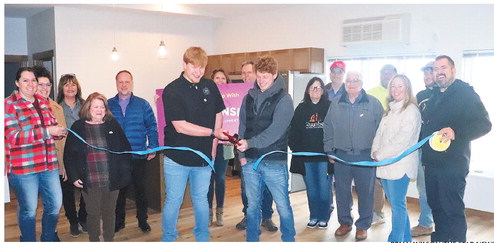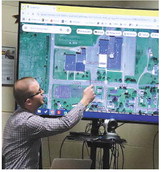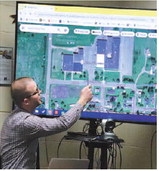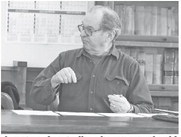County starts its review of assemblies ordinance
Earlier this summer, when a rollercoaster near Crandon got stuck upside down with eight people hanging helplessly, it took three hours for a rescue team to be assembled and take action.
Phillip Rentmeester, Marathon County’s director of Emergency Management, said incidents like this highlight the need for action plans to be put in place with policies that back them up. Rentmeester brought this up during the first meeting last week of a work group that is looking at updating the county’s ordinance regulating large assemblies.
An effective assemblies ordinance will guarantee access for firefighters and ambulances and ensure the availability of emergency services for the rest of the county, he said.
“Something like that is needed in order to protect the public, the participants at that event, the staff working there, and to identify the resources that could be used to respond – not just the staff, but also the logistics and the equipment,” he said.
The county’s current assemblies ordinance, 12.04, requires event organizers to get a license from the zoning administrator if they expect to draw 3,000 or more people for eight hours or longer. Applicants are required to submit plans dealing with everything from fencing and water supply to lighting, security and fire protection.
County officials say the orContinued from page 1
dinance is outdated and possibly unenforceable based on a recent court ruling. They have also pointed out that the ordinance does not allow the county to seek monetary reimbursement from event organizers who rely on sheriff’s deputies and highway workers for traffic control and security.
If an incident occurs at a large event, Cpt. Ryan Berdal of the sheriff’s department said it takes law enforcement resources away from other areas of the county. Also, without designated parking, he said events on farms and other rural locations can become a “free-for-all” for attendees.
“At that point, you have people parking on our county roadways or town roadways, and we can’t get necessary equipment in if there were to be some type of large-scale event – or even a minor event – where fire, EMS or law enforcement resources are needed,” he said.
The ordinance work group, which had its first meeting on July 24, includes representatives from several county departments, including Emergency Management and Conservation, Planning and Zoning, along with five county board supervisors. Their goal is to develop a draft ordinance by this fall, allowing time for municipalities and county supervisors to review and comment on the proposal before it is adopted in February of 2024.
Since cities and villages have “home rule” authority under the state constitution, the ordinance applies only to unincorporated townships, regardless of whether they are under county zoning or not.
CPZ director Laurie Miskimins noted that the county also has a “special event” policy within its zoning code, which regulates the number and timing of events and requires information about the sale of alcoholic beverages, bathroom facilities, temporary camping and other issues. She said the goal is make sure the two ordinances are in alignment.
When it comes to special events, Miskimins said the most common source of complaints are neighboring property owners concerned about the impact on their own land. She said they want to make sure the event is “contained” and doesn’t interfere with their ability to use their own property as they see fit.
Shad Harvey, the CPZ’s land resources manager, said conflicts between neighboring property owners often center around issues like noise, traffic safety and parking, but the county is limited in how much it can regulate those areas of concern.
One question the work group will need to answer is how big of a gathering does it need to be before the assemblies ordinance applies? Right now, it is 3,000 or more.
County administrator Lance Leonhard noted that different counties have set a “wide variety” of thresholds for when their ordinances apply. Portage County, for example, regulates events when 300 people or more gather for eight or more hours, while LaCrosse County gets involved with a crowd size of 1,000 or more for four or more hours. Kenosha County has a minimum threshold of 5,000 people for daytime events, or 100 for those between midnight and 8 a.m.
As the group continues its work, Leonhard said he can provide more information from other counties’ ordinances to help guide the discussion.
Leonhard pointed out that, under the current ordinance, applications are supposed to be reviewed and approved by a committee that no longer exists, so the work group will have to decide if county staff or elected officials need to sign off on large assemblies going forward.
One of the primary objectives of the ordinance should be to encourage event organizers to plan ahead of time for things like providing enough parking, drinking water and toilet facilities, Leonhard said.
“First and foremost, we want to help people think about some things they might otherwise not think about,” he said.
Corporation counsel Michael Puerner identified a provision in the current ordinance that might not “pass constitutional muster” – a 60-day period for the zoning administrator to review applications before they are approved or denied. Puerner also noted that any regulation of constitutionally protected assemblies has to be “narrowly tailored” and “content neutral.”
“We can’t pick and choose which events we like and which ones we don’t,” he said. “We have to tailor our regulations to meet a specific goal.”
